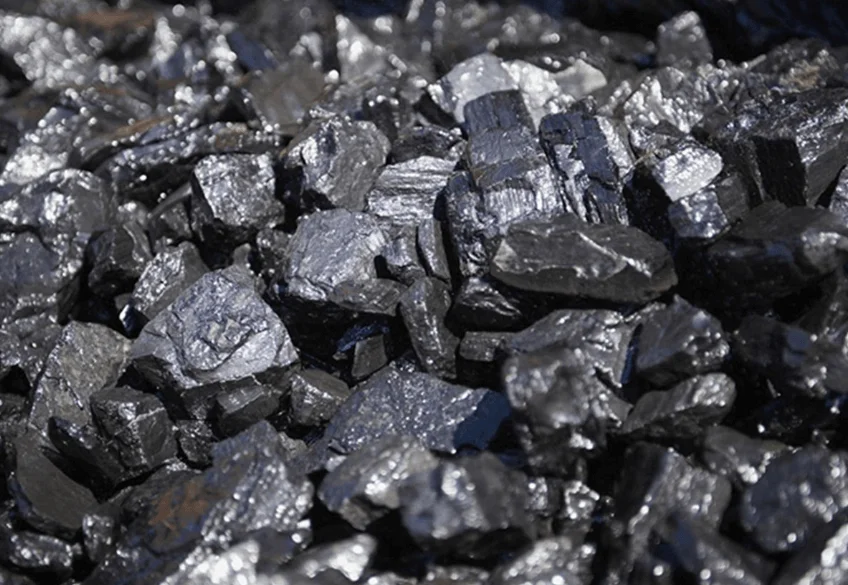Carbon, the fourth most abundant element in the universe, is an incredibly versatile and fascinating element with a multitude of properties and applications. Found in various forms, such as diamonds, graphite, and even in the air we breathe, carbon plays a vital role in the chemistry of life and the world around us. Beyond its importance in organic compounds and its contribution to climate change, there exist numerous carbon interesting facts that shed light on its unique characteristics and its significance in different fields of science and industry.
Carbon Interesting Facts
These are some carbon interesting facts:
- Diamonds earned the nickname “ice” not because of their appearance but due to their remarkable ability to conduct heat while remaining cool to the touch. This unique characteristic makes diamonds suitable for use as heat sinks in microchips. Although synthetic diamonds are commonly used in such applications. The three-dimensional lattice structure of diamonds allows them to convert heat into lattice vibrations, resulting in high thermal conductivity.
- Carbon, the building block of all life forms, manifests in a diverse range of substances, including fats and sugars. It forms the foundation of every living entity. In fact, carbon constitutes nearly 19% of the human body’s weight. In the non-living world, carbon extends beyond organic compounds by combining with oxygen and other elements to form substantial portions, including rocks and minerals. One notable addition to the carbon family is graphene, an incredibly thin and resilient material discovered serendipitously in 2004 by Andre Geim and Kostya Novoselov. Their discovery earned them the Nobel Prize in Physics in 2010.
- With the ability to form four bonds, carbon exhibits great versatility, engaging with numerous other elements to create a vast array of compounds that we encounter regularly in plastics, medications, and fuels. These structures possess both strength and adaptability.
- In 1772, Antoine Lavoisier demonstrated the unique chemical structure of carbon. Even though it had been known as coal and soot (after combustion) for thousands of years. Using a solar furnace, Lavoisier burned a diamond in a glass jar and analyzed the resulting residue, conclusively proving that diamond exclusively consists of carbon.
- Generally, people consider pure carbon to be non-toxic, although inhaling fine particles, such as soot, can harm lung tissue. However, people deem the consumption of graphite and charcoal to be safe.

Image Source: Instagram @carbonchemistryltd
Carbon Interesting Facts You Should Know
- The Latin word “carbo,” meaning charcoal, gave birth to the name “carbon.” The German and French words for charcoal bear resemblance to the term as well.
- Organic material contains carbon, including DNA, proteins, and various components of the human body. While water often receives acclaim as the key to life on our planet, carbon also plays an essential role in bonding atoms together. It is present in all living organisms, including animals, humans, and plants, as well as in rocks. However, carbon only constitutes a mere 0.025% of the Earth’s crust, according to scientific studies.
- Sitting between Boron and Nitrogen on the periodic table, carbon assumes great significance. Nitrogen, the most common gas in our atmosphere, and Boron, a nutrient for the human body, surround carbon in this arrangement. Carbon’s atomic structure comprises six protons, six neutrons, and six electrons. Scientists believe that carbon originated from the accumulation of alpha particles in supernova explosions. Unlike its relative hydrogen and helium, which are believed to have formed during the turbulence of the “Big Bang.”
- Carbon serves as the foundation for organic chemistry, as it exists in all living organisms. The simplest organic molecules consist of carbon bonded with hydrogen, and many other common organic compounds also incorporate oxygen, nitrogen, phosphorus, and sulfur.
- As a nonmetal, carbon has the unique ability to bond with itself and a wide range of other chemical elements, giving rise to over ten million compounds. Carbon earns the moniker “King of the Elements” due to its exceptional capacity for forming compounds.
- Carbon’s abundance in the universe reflects its essential role in the cosmos. Although hydrogen, helium, and oxygen are more abundant by mass, carbon’s significance lies in its ability to form complex molecules and facilitate the emergence of life.
READ ALSO: Interesting Facts About Iron | Unveiling Its Magnetic Mysteries
Fun Facts About Carbon
- Carbon is the sixth element on the periodic table, with the symbol C and atomic number 6.
- By mass, it ranks as the fourth most abundant element in the universe.
- In all living organisms, carbon forms the basis of organic chemistry and plays an essential role in sustaining life on Earth.
- The element can exist in various forms, known as allotropes, including graphite, diamond, and fullerenes like buckminsterfullerene (C60).
- Diamonds, composed entirely of carbon, are one of the hardest substances known to man. They form deep within the Earth under extreme pressure and temperature conditions.
- Graphite, with its layered structure, is one of the softest substances and finds common usage in pencils.
- Carbon nanotubes excel in strength and conductivity, offering potential in electronics and composites.
- Graphene’s remarkable properties – thinness, lightness, and conductivity – make it an impressive material.
- Carbon fibers’ strength and weightlessness make them valuable in the aerospace and sports industries.
- Carbon’s role in the carbon cycle regulates the exchange of carbon and mitigates climate change.
- Carbon nanotubes, graphene, and carbon fibers are examples of how carbon contributes to material innovation.
- Carbon’s remarkable properties and versatility make it an important element in multiple fields.
- Carbon, a ubiquitous element, plays a vital role in both material innovation and climate regulation.
- Carbon’s unique properties make it an essential component of various materials, from electronics to sports equipment.
- Carbon’s active participation in the carbon cycle aids in climate change mitigation. Carbon dioxide (CO2), a greenhouse gas, is responsible for trapping heat in the Earth’s atmosphere and contributing to global warming. Efforts are underway to reduce carbon dioxide emissions and develop carbon capture and storage technologies.
More Facts
- The overall amount of carbon on Earth remains relatively constant due to the carbon cycle. Photosynthetic plants extract carbon from the air or seawater through photosynthesis, converting it into glucose and other organic compounds using the Calvin cycle. Animals consume some of this biomass, exhaling carbon dioxide and thus returning carbon to the atmosphere. This continuous cycle ensures the circulation of carbon throughout the biosphere.
- Interestingly, carbon black holds the distinction of the first pigment used for tattooing. The tattoos found on Ötzi the Iceman, dating back 5200 years, consisting of carbon and have endured through the ages, are still visible to this day.
- Sources of inorganic carbon include carbon dioxide, limestone, and dolomite. Organic carbon sources encompass coal, oil, peat, and methane clathrates. Naturally, carbon is composing three isotopes, namely Carbon-12 and Carbon-13, which are known for their stability. while carbon-14 is radioactive, with a half-life of approximately 5730 years. Carbon-14 forms in the upper atmosphere when cosmic rays interact with nitrogen. While carbon-14 is present in the atmosphere and living organisms, it is virtually absent in rocks. In total, Carbon has 15 known isotopes.
- Carbon exhibits a typical valence of +4, allowing each carbon atom to engage in covalent bonding with up to four other atoms. However, in compounds such as carbon monoxide, a +2 oxidation state can also be observed.
- Carbon continues to captivate scientists and researchers with its endless possibilities and unrivaled versatility. From the microscopic world of nanomaterials to the vast expanse of the universe. Moreover, carbon’s influence permeates every aspect of our lives. Underscoring its status as one of the most captivating and essential elements known to humanity.










